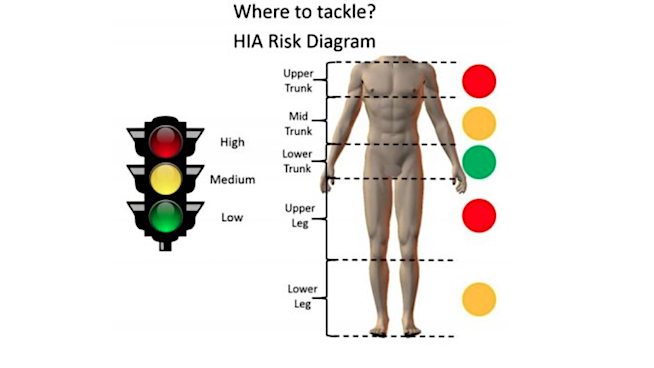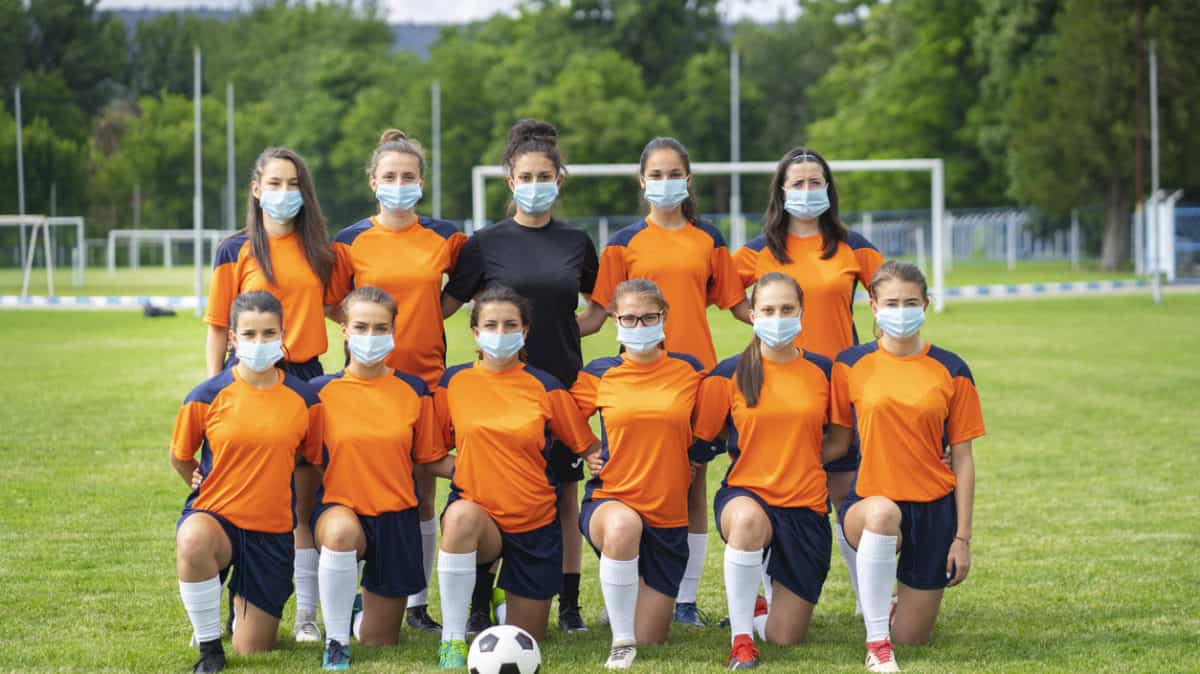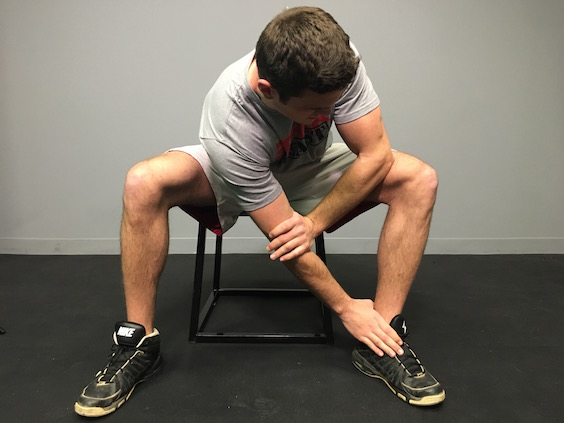New Study Reveals the Best Area to Aim for When Making a Tackle
The safest place to target a ballcarrier when making a tackle?
According to a new study from Trinity College Dublin, it’s the lower trunk.
Bioengineers used a combination of video analysis, 3-D motion analysis lab trials and model-based image-matching techniques to come to that conclusion.
The study, which centered around rugby players, found that tacklers aiming for the upper trunk or upper legs were at the greatest risk of head injury, while those aiming for the lower trunk were at the lowest risk. From ScienceDaily:
Prevention strategies should place emphasis on tackling lower-risk body regions such as the lower trunk, as nearly four out of five (77%) tackler HIAs are caused by tackles to the upper trunk (47%) and upper legs (30%). Specific tackler recommendations include:
• Make contact at the lower trunk.
• Take shorter, faster steps when approaching the ball carrier.
• Avoid planting feet.
• Keep head up and face the ball carrier.
• Do not look at the ground.
• Place head on the correct side of the ball carrier.
• Protecting the ball carrier.
The bioengineers also found that high-impact tackles to the upper trunk also put the ball carrier at greater risk of head injury, even if there’s no direct contact to the head. The following diagram outlines the researchers findings:

While the study centered around elite rugby players, it could have major ramifications for American football players, as well.
Research from 2015 found that implementing helmet-less tackling drills on a regular basis helped a Division I football team both improve their tackling ability and reduce overall head impacts by 30%.
Photo Credit: miodrag ignjatovic/iStock
READ MORE:
RECOMMENDED FOR YOU
New Study Reveals the Best Area to Aim for When Making a Tackle
The safest place to target a ballcarrier when making a tackle?
According to a new study from Trinity College Dublin, it’s the lower trunk.
Bioengineers used a combination of video analysis, 3-D motion analysis lab trials and model-based image-matching techniques to come to that conclusion.
The study, which centered around rugby players, found that tacklers aiming for the upper trunk or upper legs were at the greatest risk of head injury, while those aiming for the lower trunk were at the lowest risk. From ScienceDaily:
Prevention strategies should place emphasis on tackling lower-risk body regions such as the lower trunk, as nearly four out of five (77%) tackler HIAs are caused by tackles to the upper trunk (47%) and upper legs (30%). Specific tackler recommendations include:
• Make contact at the lower trunk.
• Take shorter, faster steps when approaching the ball carrier.
• Avoid planting feet.
• Keep head up and face the ball carrier.
• Do not look at the ground.
• Place head on the correct side of the ball carrier.
• Protecting the ball carrier.
The bioengineers also found that high-impact tackles to the upper trunk also put the ball carrier at greater risk of head injury, even if there’s no direct contact to the head. The following diagram outlines the researchers findings:

While the study centered around elite rugby players, it could have major ramifications for American football players, as well.
Research from 2015 found that implementing helmet-less tackling drills on a regular basis helped a Division I football team both improve their tackling ability and reduce overall head impacts by 30%.
Photo Credit: miodrag ignjatovic/iStock
READ MORE:










